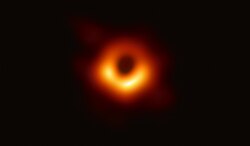 | |
| Discovery | |
|---|---|
| Discovered by | Rafael Luque, Diana Kossakowski |
| Discovery site | TESS |
| Discovery date | 2019 |
| Radial velocity | |
| Orbital characteristics | |
| 0.204±0.015 AU [1] | |
| Eccentricity | ≈0.033 ± 0.057 [2] |
| 55.70±0.05 d [1] | |
| Inclination | <40° [2] |
| Star | Gliese 357 |
| Physical characteristics | |
| Mass | 6.1±1.0 M🜨 [1] 7.20±1.07 M🜨 [2] |
| Temperature | 219.6 ± 5.9 K (−53.55 ± 5.90 °C; −64.39 ± 10.62 °F) [1] |
Gliese 357 d is an exoplanet, considered to be a "Super-Earth" within the circumstellar habitable zone of its parent star. [3] [4] [5] [6] The planet orbits Gliese 357, 31 light-years from the Solar System, [4] The system is part of the Hydra constellation. [4]
The planet was discovered by the TESS team and announced in July 2019. The data confirming the presence of the planet was uncovered in ground-based observation dating back to 1998 while confirming the TESS detection of Gliese 357 b, a “hot earth” that orbits much closer to the parent star. [6] Even though Gliese 357 d is 20% closer to Gliese 357 than Earth is to the Sun, Gliese 357 is much smaller than the Sun, receiving only as much energy as Mars. As a result, it is estimated that the average temperature is -64°F (-53°C), but this temperature is survivable for humans; if there is a thick enough atmosphere, the actual temperature could be much higher. If humans traveled there using modern spacecraft, it would take them about 660,000 years to get there. [a] The planet is 6.1 times more massive than Earth and 2.3 times Earth's size. [8]


